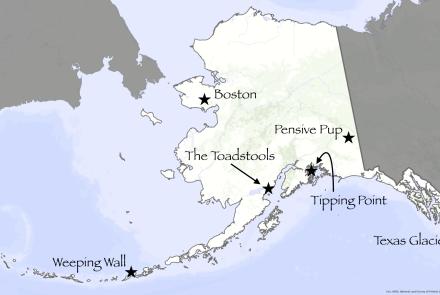The Wanderings of the Arctic Circle
After 506 miles of walking, my dog Jane and I just hiked over the dashed line that encircles the top of every globe-the Arctic Circle. I'd like to pitch the tent precisely on the Arctic Circle, but it's not easy to pinpoint because the imaginary line is almost constantly on the move.
The Arctic Circle is known to most people as the spot where the sun never sets on June 21, the summer solstice, and the spot where the sun never rises on December 21, the winter solstice. The movement of the Arctic Circle due to changes in Earth's axis is called the Milankovitch Cycle, which was named for Serbian climatologist Milutan Milankovitch.
Milankovitch recognized that the tilt of Earth's axis shifted from about 22 to 24.5 degrees every 20,000 years. Then, he observed, the axis shifts back in another 20,000 years. Geophysical Institute Professor Emeritus Tom Hallinan said Earth is sort of like a spinning top that has a little bit of wobble. That wobble is what happens during the Milankovitch Cycle.
How does the wobble affect the Arctic Circle? The 2.5 degrees of axis shift every 41,000 years equals about 200 miles of movement in that time, or about 25 feet each year. T. Neil Davis, who wrote the Alaska Science Forum column 20 years ago, pointed out that the wandering of the Arctic Circle is highly variable. The circle's location may change as much as 50 feet every year, making it difficult to be a perfectionist when posing for pictures at the Arctic Circle wayside on the Dalton Highway, or when pitching one's tent.



